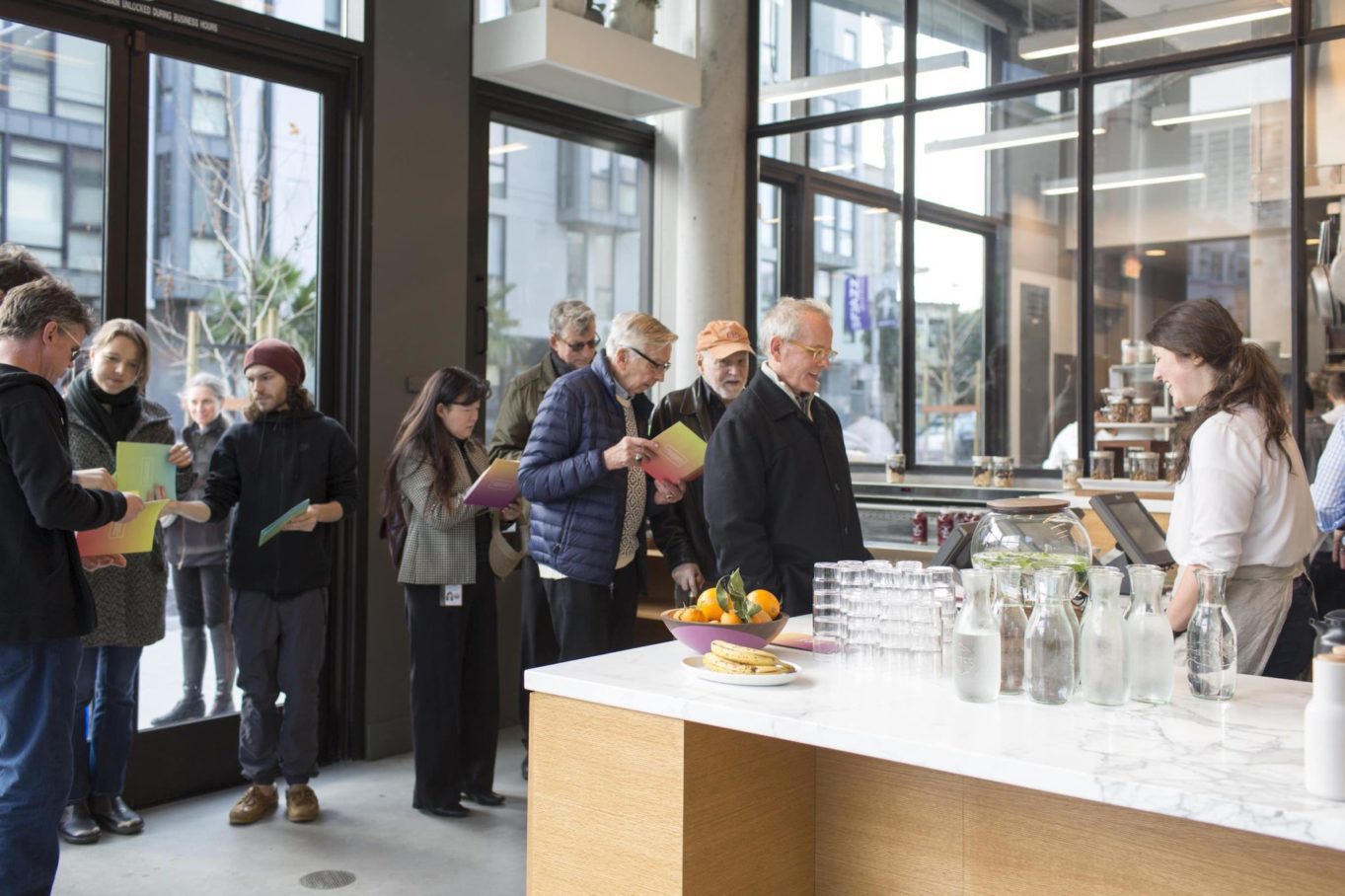How to Dine Out Gluten Free

By Cynthia Rice
If you need to follow a strict gluten-free diet for medical reasons, you know that dining out can be an uncomfortable, if not downright risky, experience. Never mind that you may feel you’ve become the eye-roll-inspiring high-maintenance customer who asks endless questions about menu ingredients and triple-checks the facts when the dishes arrive. Or that, based on instinct or evidence, you may not trust the staff’s level of knowledge, regardless of their responses. Or that you may be stuck settling on a salad with no dressing and a simple sautéed chicken breast just to be on the “safer” side. As you know, such discomforts pale next to the effects of being glutened. Still, there is good news: Restaurant staffs are more educated in gluten-free dining than ever before, and it is possible to have a relaxing, enjoyable, and safe meal while dining out—if you advocate for yourself. Cynthia Rice shares ways to help ensure your restaurant-dining experiences are satisfying and safe.
Before You Go
Research gluten-free-friendly restaurants. There’s a lot of information online for gluten-free diners, including gluten-free city guides, apps, and blogs that highlight trustworthy restaurants. Try Find Me Gluten Free, Gluten Free Travel Site, or AllergyEats, or do an online search for gluten-free restaurants in your area.
Avoid obvious risks. A GF sandwich at an everyday deli is not safe if it’s been cut on the same cutting board as regular bread or warmed in the same toaster. Ditto a GF pizza baked in the same oven as “regular” pizzas without significant precautionary tactics. There are exceptions; New York City pizzeria Pie by the Pound, which deems itself a “food haven for the gluten-free community,” offers both traditional and gluten-free pizza. They also make staff follow a strict protocol, including extra cleaning, separation of prep and storage areas, and use of GF-dedicated utensils. However, like so many restaurants offering gluten-free options, they post the following disclaimer on their website: “Although we take every precaution against it, there is still a possibility of cross-contamination.” Thus, it’s always a good idea to evaluate the risks and make an informed decision.
Go upscale. At finer restaurants, chefs tend to be more aware of gluten issues, which ingredients contain gluten, and how to prevent cross contamination. They also tend to make more items from scratch, so they know exactly what’s in the food they’re serving.
Rich Vellante, executive chef and executive vice president for Boston-based Legal Sea Foods, which, among other things, has a dedicated fryer for GF fish and chips at each of its locations, echoes the sentiment of many high-end establishments: “Serving gluten-free options provides another opportunity for us to be hospitable to our guests.”
Look for restaurants that have a similar attitude about providing high-quality service to diners with dietary restrictions as well as farm-to-table restaurants, which focus on whole ingredients and use fewer processed foods, which tend to contain gluten.
Include a note in your reservation that you are gluten-free for medical reasons.Restaurant-reservations websites typically include a notes section for important diner information, including birthdays, anniversary celebrations, and dietary restrictions. You can also note your GF needs when phoning for reservations. Stating your GF case up-front gives restaurant managers and chefs a heads-up and also continues to heighten their awareness of the need for accommodating GF guests in general.
According to chef Shotaro Kamio, of award-winning Japanese restaurant Iyasare in Berkeley, California, at least 65 percent of the restaurant’s reservations request gluten-free dining every single day. As such, Chef Kamio goes out of his way to ensure his staff knows exactly how to cater to GF diners.
Contact the restaurant ahead of time and speak with the chef or manager about your upcoming visit. Advance planning leaves less guesswork at the dinner table. Ask if there’s a gluten-free menu, and what menu items can be made gluten free. Study online menus to determine which items are most likely naturally gluten-free, and then, of course, confirm it with staff anyway. If your choices are limited, and you’re committed to dining at a specific restaurant, ask if the establishment will allow you to bring in your own gluten-free items, such as pasta, hamburger buns, or croutons, and be willing to safely prepare these items using clean cookware.
Ask management if the servers understand gluten issues, are trained to assist gluten-free customers, and regularly take extra steps to avoid cross contamination. According to Chef Vellante, Legal Sea Foods’ staff completes formal allergy training and takes an annual allergy exam; follows elaborate, standardized steps to reduce the chance of cross contamination; and has a manager deliver all GF orders. Restaurants that go to such lengths are solid choices.
Boost your chances for success. Avoid busy times to ensure that the staff can accommodate your requests. Eat a snack before arriving if there are limited GF options but you still want to visit the restaurant and enjoy socializing.
Review our list of “risky restaurant foods.” You’ll be amazed at the unexpected ingredients that, if used by the restaurant, may sneak gluten into your food.
At the Restaurant
Notify the manager and your server of your dietary restriction upon arrival. When you meet restaurant staff, explain your dietary restriction politely and simply, without extra detail or your medical history: “I need to avoid gluten for medical reasons. If I eat even a small amount of gluten, I can get sick.” If the server seems uncertain about anything, ask to speak with the manager before you order.
Be your own “menu detective,” and ask questions. Beware of hidden sources of gluten. The word “crispy” often means breaded or dusted with flour and fried or deep-fried. Marinades and salad dressings can include soy sauce or malt vinegar. Some soup broths include gluten-containing ingredients. The more you learn to decode menus—and continue to ask questions, because menus never list all the ingredients—the better you will get at protecting yourself when you dine out. See page 68 for a list of common gluten-containing culprits.
Ask your server to inform the chef of your medical issue when your order is placed. Bring a gluten dining card (available at gluten.org, celiactravel.com, and other sources) to share with the chef and clarify what you can and cannot eat. This tool is especially helpful if there is a language barrier between you and the staff. Or just make a verbal request to ensure the message makes it to the head of the kitchen.
When in doubt, stick with simple dishes. The more straightforward the dish and its ingredients, the less likely the chance of gluten sneaking into your meal.
When your order arrives, confirm that it was prepared correctly before you start eating. If your salad comes crowned with croutons, you can see that something’s amiss. But gluten can hide in a variety of ingredients and preparation methods. It’s always better to be safe than sorry.
When in doubt, don’t eat! There’s no way around it: If you are uncomfortable or know the staff is ill equipped to provide a safe meal, despite assurances otherwise, be prepared to politely leave.
After the Visit
Become a regular. Find local restaurants you like, and that understand your dietary needs, and visit them often. The staff will get to know you, and you will learn which items on the menu can be prepared safely. Be grateful to and reward generously the staff members who take your dietary restriction seriously and help you to enjoy your meal safely. Tell your friends—better yet, invite them to join you for dinner!

